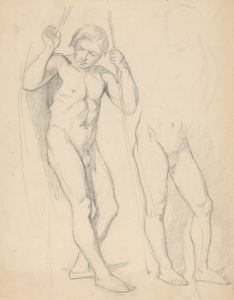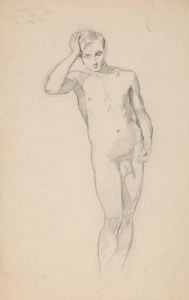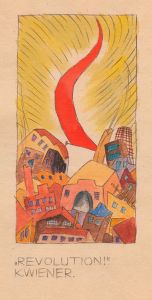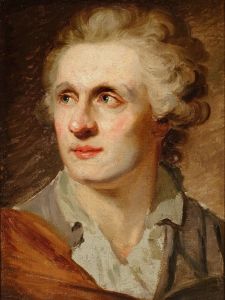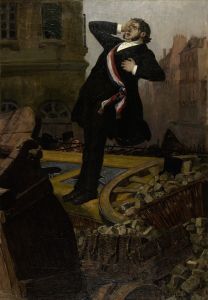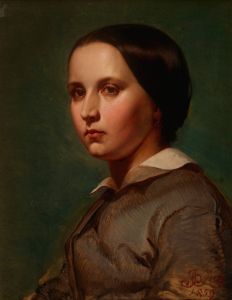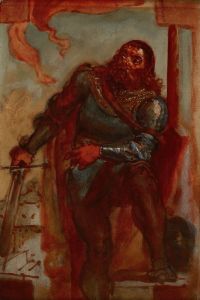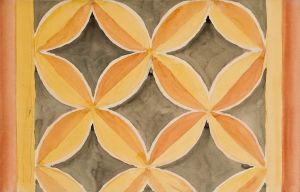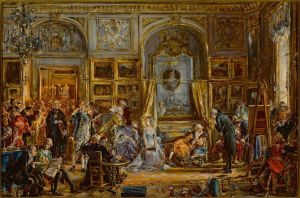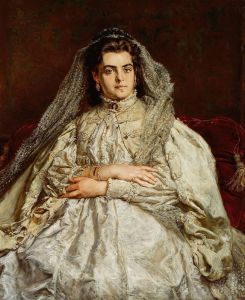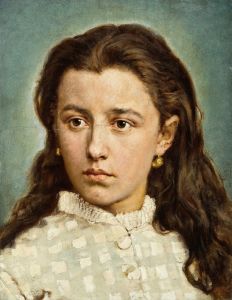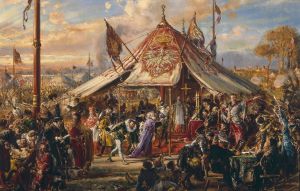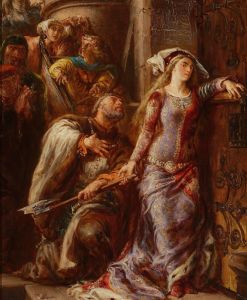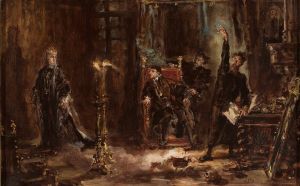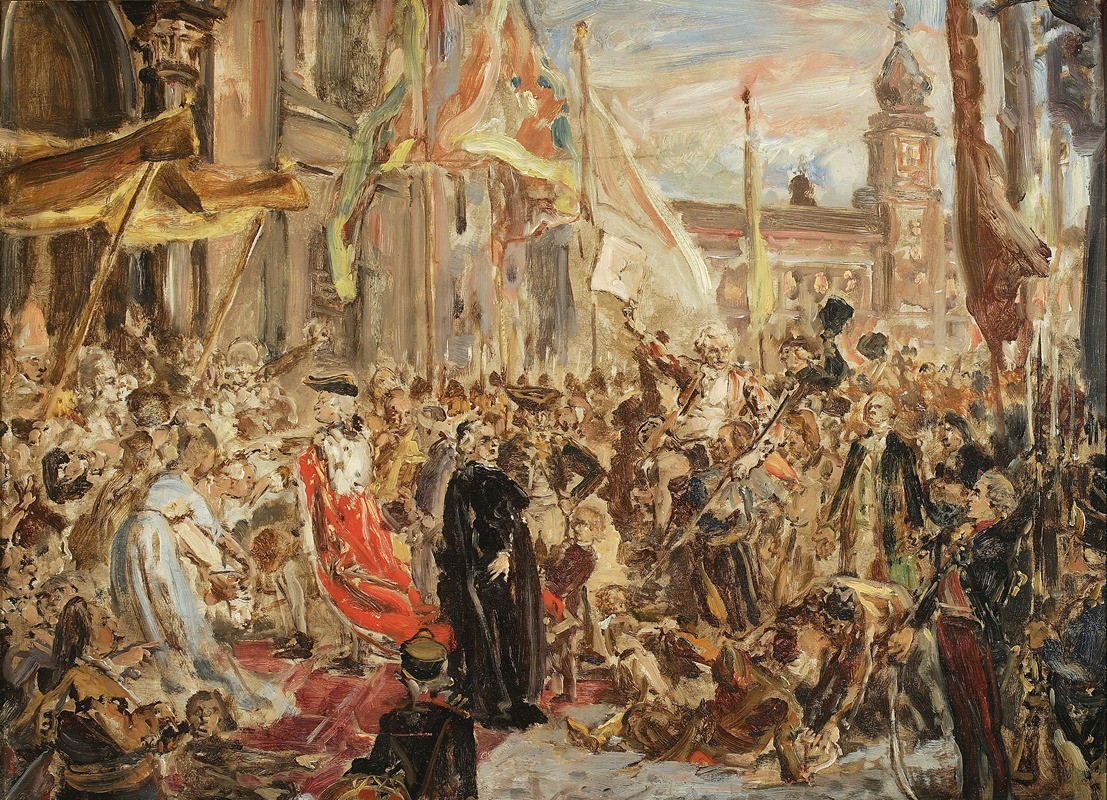
Sketch for the painting “Constitution of the 3 May”
A hand-painted replica of Jan Matejko’s masterpiece Sketch for the painting “Constitution of the 3 May”, meticulously crafted by professional artists to capture the true essence of the original. Each piece is created with museum-quality canvas and rare mineral pigments, carefully painted by experienced artists with delicate brushstrokes and rich, layered colors to perfectly recreate the texture of the original artwork. Unlike machine-printed reproductions, this hand-painted version brings the painting to life, infused with the artist’s emotions and skill in every stroke. Whether for personal collection or home decoration, it instantly elevates the artistic atmosphere of any space.
Jan Matejko's "Sketch for the painting 'Constitution of the 3 May'" is a preparatory work for one of the most celebrated paintings by the renowned Polish artist Jan Matejko. The sketch, like the final painting, captures a pivotal moment in Polish history—the adoption of the Constitution of May 3, 1791. This constitution is often heralded as Europe's first modern codified national constitution and the world's second, following the United States Constitution.
Jan Matejko, born in 1838 in Kraków, was a prominent Polish painter known for his large-scale historical paintings that vividly depict significant events in Polish history. His works are characterized by their detailed representation and dramatic intensity, often serving as visual narratives of Poland's past.
The "Constitution of the 3 May" painting, completed in 1891, commemorates the centenary of the constitution's adoption. The sketch for this painting serves as a preliminary study where Matejko planned the composition, arrangement of figures, and overall dynamics of the scene. It provides insight into Matejko's creative process and his method of capturing the essence of historical events.
The Constitution of May 3, 1791, was a progressive document that sought to reform the political system of the Polish-Lithuanian Commonwealth. It aimed to strengthen the central government, reduce the power of the nobility, and improve the rights of the peasantry. The constitution was a response to the internal and external challenges facing the Commonwealth, including political anarchy and the threat of partition by neighboring powers.
Matejko's sketch, like the final painting, features a dynamic assembly of figures, each representing key personalities involved in the drafting and adoption of the constitution. Among these figures are King Stanisław August Poniatowski, who played a crucial role in the reform efforts, and other notable statesmen and reformers of the era. The scene is set in the Royal Castle in Warsaw, where the constitution was adopted, and it captures the fervor and optimism of the moment.
Matejko's work is not only an artistic achievement but also a patriotic statement. Through his paintings, he aimed to inspire national pride and a sense of identity among Poles during a time when Poland was partitioned and its sovereignty was under threat. The sketch for "Constitution of the 3 May" reflects Matejko's dedication to preserving Polish history and culture through art.
The sketch is an important artifact in its own right, offering a glimpse into Matejko's artistic process and the historical context of the time. It is part of the collection of the National Museum in Warsaw, where it is preserved alongside other works by Matejko that document Poland's rich history.
In summary, Jan Matejko's "Sketch for the painting 'Constitution of the 3 May'" is a significant preparatory work that illustrates the artist's meticulous approach to capturing a landmark event in Polish history. Through this sketch, Matejko laid the groundwork for a masterpiece that continues to resonate as a symbol of national pride and historical consciousness.





